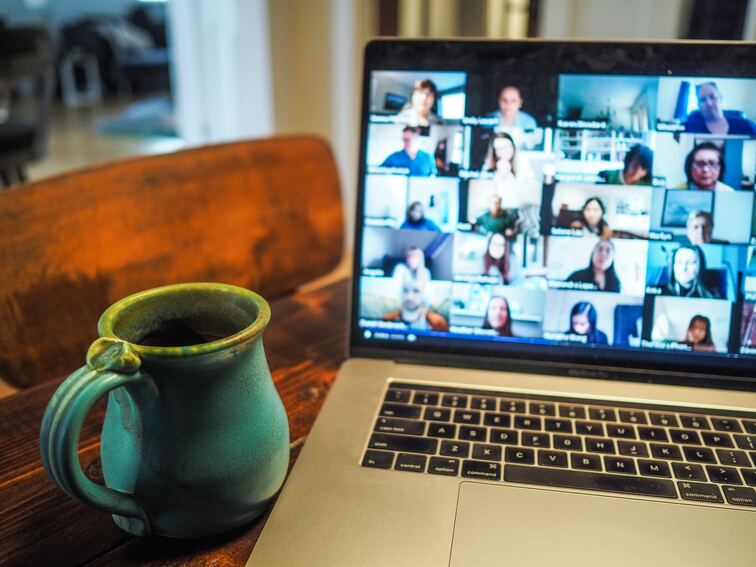Whether your company is big or small, maintaining the alignment, knowledge, and engagement of your staff is essential. "All Hands Meetings" are used in situations like these. An effective method for promoting openness, cohesion, and cooperation inside a company is an all-hands meeting.
We will define an All Hands Meeting and provide you with crucial advice on how to conduct one effectively in this blog.
After completing this voyage, you will have a thorough awareness of the advantages of these get-togethers as well as the doable measures to guarantee that they have a beneficial, long-lasting effect on your team and the business as a whole. Now let's get started and learn the secrets to being proficient at holding All Hands Meetings.

Planning an All Hands Meeting
Arranging an All Hands Meeting is a crucial task for any company, and it involves much more than just setting a time for everyone to get together. It's a chance to bring your whole team together under the principles of openness, collaboration, and a similar goal—from entry-level employees to senior leadership.
You have the ability to educate, uplift, and include your team in this tactical undertaking, building a climate of mutual respect and cooperation. But for a conference of this kind to be successful, careful preparation and execution are necessary to guarantee that its objectives are reached.
Identifying Objectives for the Meeting
Setting precise, well-defined goals for your All Hands Meeting is an essential first step in the preparation process. These goals provide the meeting its overall emphasis and purpose, directing its agenda items and organizational design. The following are some typical goals to think about:
Communication of Company Updates: To keep all staff members up to speed on the organization's status, and communicate key company news, financial figures, and performance indicators.
Goal and Strategy Alignment: Make sure that every employee whether they are remote employees or not is aware of the purpose, vision, and strategic priorities of the organization. This will ensure that everyone is working toward the same long-term goals.
Engagement and Motivation: Make the most of the gathering to uplift and encourage the staff by acknowledging exceptional work, celebrating successes, and reiterating the company's core principles.
Transparency: Encourage an environment that is open and transparent by talking about strategies for resolving obstacles and failures.
Team Building and Camaraderie: Provide workers with chances to interact and form bonds with members of other teams or departments, promoting cohesion and cooperation.
Feedback and Q&A: Establish a platform where staff members can communicate with leadership, share their thoughts, and ask questions in order to make sure that their issues are taken seriously.
Training and Development: Provide instructional materials or training sessions to support staff members' professional development and keep them abreast of best practices and developments in the field.
Acknowledgment and Celebration: To raise spirits and recognize the efforts of your team, recognize and celebrate significant events like work anniversaries, promotions, and corporate accomplishments.
Change Management: Discuss and convey the implications of any major organizational changes, including mergers, acquisitions, and restructurings, as well as the next course of action.
Setting a Date and Time for the Meeting
The success of your All Hands Meeting may be greatly impacted by choosing the best day and time for it. To increase attendance, start by taking your employees' availability and time zones into consideration.
Steer clear of scheduling conflicts that might divert attention, such as holidays, important events, or close deadlines. Maintain a healthy work-life balance by avoiding the weekends and late nights unless absolutely essential.
If these are recurring meetings, be consistent and give staff plenty of advance notice to make plans. Make sure that employees who work remotely or internationally can access the event, and if it is not possible for them to attend in person, provide a recording.
Finally, get input from the staff and maintain flexibility when modifying the meeting schedule to accommodate a varied workforce.

Choosing an Appropriate Platform or Venue
The success of your All Hands Meeting depends on the platform or location you choose. Determine whether it will be virtual or real first, taking into account things like the number and spread of your staff. Select a virtual meeting platform that can grow with your whole team and any future expansion.
Seek out platforms with comprehensive capabilities for engagement and interactivity, easy-to-use interfaces, and interoperability with a range of hardware and operating systems. Privacy and data security issues are also crucial, particularly for online meetings.
To guarantee a flawless experience, evaluate the platform's technological stability and support as well. In conclusion, if you're holding a live meeting, make sure the location has all the facilities and tools needed for presentations, along with considerations for the comfort and accessibility of those who will be there in person.
Preparing an Agenda for the Meeting
One of the most important steps in making sure your All Hands Meeting is successful and productive is creating a well-organized agenda. The agenda keeps the meeting on course and structured by acting as a road map. Begin by stating the goals and expected results of the meeting, making sure that they are in line with the requirements of the staff and the company.
Divide the agenda into discrete time slots, giving each item on the schedule (welcome and introductions, corporate updates, presentations, interactive discussions, Q&A sessions, and any other pertinent subjects) the proper amount of time.
Make it clear who will lead or present each session, and stress that having a range of speakers will keep the audience interested. Give attendees prior notice of the agenda so they may plan ahead and schedule breaks to avoid information overload.
Finally, maintain your flexibility during the meeting to allow for unforeseen topics of conversation or inquiries, making sure that the gathering stays engaged and dynamic.
Inviting Participants to the Meeting
Sending out invitations for an All Hands Meeting demands careful planning and organization. To begin, compile an exhaustive attendance list that covers every employee, regardless of location or status as a remote worker.
Reach out to your audience using email, calendar invites, and internal lines of communication. Don't forget to send out many reminders as the meeting date gets closer. Give clear instructions on the meeting's goal, the time, date, and venue, as well as any required reading or participation requirements.
Make it simple for guests to confirm their participation or RSVP, and provide them a way to ask questions or suggest subjects they'd want to have covered before the event. If the conference is virtual, pay attention to time zone differences and accessibility requirements.
You may also want to send out transcripts or recordings of the meeting to individuals who were unable to attend in person. In the end, well-crafted invitations provide the conditions for an enthusiastic and well-attended All Hands Meeting.

Incorporating Elements of Company Culture into the Meeting
Adding business culture components to your All Hands Meeting is a great approach to reaffirming the identity and values of your company and company achievements. Start by introducing the company's goal and vision to the group and emphasizing how they serve as a framework for choices and actions.
Display employee endorsements and success stories that exemplify your culture and its beneficial effects. Incorporate interactive sessions or team-building exercises that promote cooperation, friendship, and the workforce's common ideals.
Celebrate accomplishments and anniversaries that fit your culture, including community service or job anniversaries. Additionally, make use of the meeting as a chance for the leadership to set an example for the organization by exhibiting the values of the firm and establishing the guidelines for a transparent, inclusive, and ever-improving culture.
These components further integrate the company's culture into the workers' daily jobs while also improving the meeting experience and leaving a lasting impact.
Executing an All Hands Meeting
The crucial moment when all of your meticulous planning and preparation come together is when you conduct an All Hands Meeting. It's the point when the workers and company leaders get together to share knowledge, acknowledge successes, and establish deeper connections.
You have the ability to enthuse, educate, and involve your team as the conductor of this planned event, creating a common goal and encouraging openness. You have the chance to make a long-lasting impression on the cohesion and culture of your company by the way the meeting is conducted.
Introducing Yourself and Your Teammates at the Start of the Meeting
It's important to introduce yourself and your coworkers at the beginning of an All Hands Meeting in order to establish the tone and foster a friendly environment. As the host or facilitator, start by extending a kind greeting to each and every attendee.
Give a brief introduction of yourself, including your name, position within the company, and title. After that, move on to introducing important team members or any co-presenters and provide a quick rundown of their responsibilities and how they help the meeting run well.
This opening conveys the event's collaborative aspect while also establishing credibility and familiarity. It's a chance to emphasize that the meeting is a team effort and to invite involvement and engagement from everyone on the team.

Keeping Participants Engaged During the Course of the Meeting
An All Hands Meeting's effectiveness depends on maintaining participant engagement throughout. The following are some methods to keep and increase engagement:
Diverse Material: Add a variety of forms to the material, including videos, interactive polls, slideshows, and Q&A sessions. Change keeps participants interested.
Engaging Visuals: To highlight important ideas and enhance the content's visual appeal, use eye-catching images and graphics.
Interactive Components: Promote involvement by using surveys, live polls, and interactive conversations. Virtual hand-raising and conversation features are examples of engagement technologies that can work well.
Speakers with Engagement: Choose speakers with a lot of energy and charisma who can explain concepts in an approachable and fascinating manner. Think of employee tales or guest lecturers.
Clear and Concise Communication: Make sure your message is audience-relevant, clear, and succinct. Steer clear of excessive intricacy or jargon.
Real-Life Examples: To help make abstract topics more approachable, use case studies and real-life examples.
Regular Breaks: Provide participants with regular opportunities to stretch and rejuvenate by incorporating brief breaks to reduce weariness.
Storytelling: To make your material more interesting and memorable, incorporate tales and anecdotes into it.
Audience Involvement: Encourage audience participation by asking questions, sharing personal stories, and offering comments. Accept their feedback and address it.
Visual Cues: To keep viewers' attention and sustain interest, employ visual cues like animations and slide transitions.
Clear Agenda: To ensure that attendees know what to anticipate, adhere to the agenda and make sure it is communicated to them.
Involvement Metrics: Track real-time participant involvement through poll results and chat conversations, and modify your strategy as necessary.
Gamification: To make the meeting more engaging and enjoyable, include gamification components like games or challenges.
Appropriate Length: To avoid information overload and preserve attention, keep the meeting to a manageable length.
Relevance: Make sure that the information offered speaks to the needs and interests of each participant and is useful to them.

Creating a Sense of Community Within Your Remote Team
Establishing a feeling of camaraderie among distant workers is crucial for promoting cooperation and preserving spirits. Start by setting up frequent online gatherings for business and pleasure where team members may converse, exchange updates, and just get to know one another better.
Through a variety of internet platforms, promote honest and open conversation while highlighting the value of attentive listening. To help staff feel appreciated and acknowledged, celebrate anniversaries and individual and team accomplishments.
You may also commemorate milestones like birthdays. Incorporate team-building exercises or challenges that foster unity and the ability to solve problems. Building a virtual community helps your remote staff feel inspired, engaged, and an integral part of a cohesive, successful company. It also improves the entire work experience.
All Hands on Deck With BeforeSunset AI
With BeforeSunset AI's up-and-coming team function, being in communication with your team has never been easier. Until then you can be the master of productivity, all you have to do is to try BeforeSunset AI for free.


